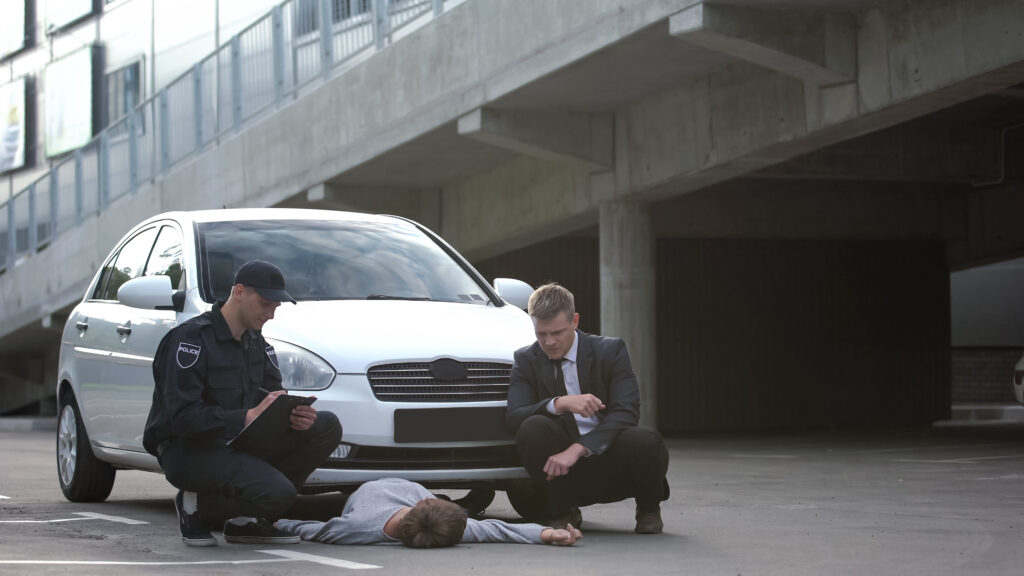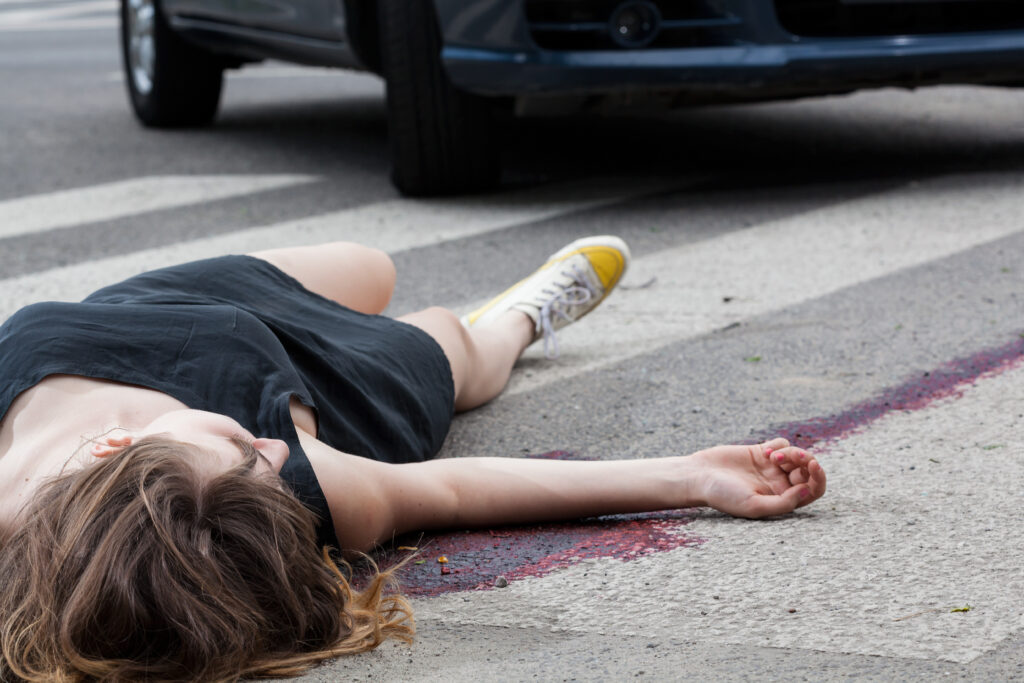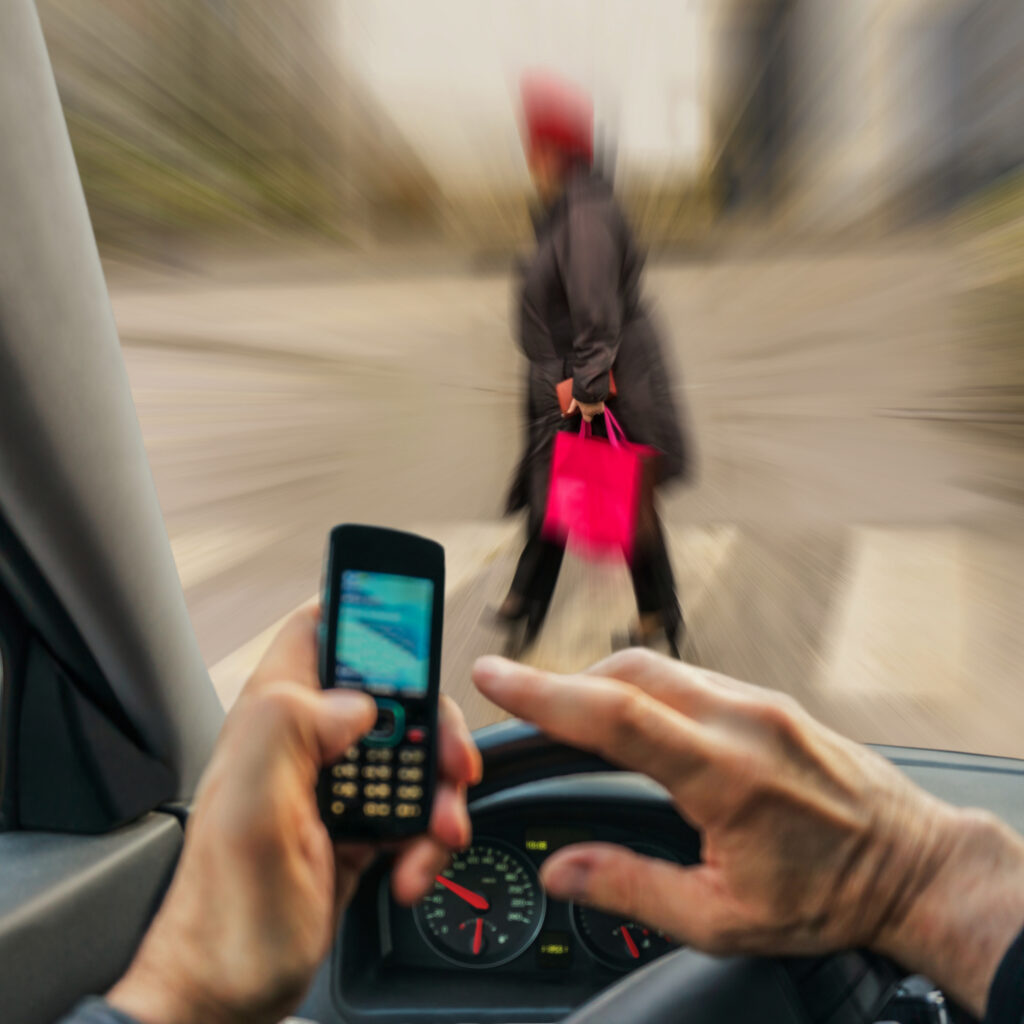Pedestrian accidents can be devastating, often causing severe injuries and life-altering consequences for those involved. Various factors can influence the amount an injured party may receive when seeking compensation for a pedestrian accident.

From understanding liability and damages to navigating insurance policies and legal processes, having an experienced pedestrian accident attorney on your side is imperative. A Sebastian pedestrian accident attorney can provide valuable insights for individuals seeking fair compensation after a pedestrian accident and advocate for their rights. While there is no one-size-fits-all answer for how much compensation you can get for a pedestrian accident, you can learn about the various factors affecting your financial recovery.
Schedule A Consultation Today!
Liability and Fault: Establishing Responsibility for a Pedestrian Accident
Pedestrian accidents often involve a complex analysis of liability. Determining fault for the accident is crucial in seeking compensation. Your attorney can explain how they assess liability and estimate your potential compensation.
Factors Influencing Liability
Traffic signals and signs are necessary to guide both drivers and pedestrians through intersections and roadways. If a driver fails to obey traffic signals, such as running a red light or ignoring a stop sign, they may be found liable for the accident.
Pedestrians often have the right of way in designated areas like crosswalks. Suppose a driver fails to yield to a pedestrian in a crosswalk or ignores their right of way. In that case, the driver may be held responsible for the accident.
The speed at which a driver travels and their level of attentiveness are critical factors. Speeding increases the likelihood of accidents, especially in areas with high pedestrian traffic. A distracted driver, perhaps by texting or not paying attention to the road, may not react in time to avoid a pedestrian. The driver's speed and attentiveness are key elements in determining liability.
Adverse weather conditions, such as rain, snow, or fog, can significantly impact visibility and road conditions. However, bad weather or poor road conditions are no excuse for hitting a pedestrian. In inclement weather, drivers are expected to adjust their speed and driving behavior accordingly. If a driver fails to do so and causes an accident with a pedestrian, their negligence in adapting to weather conditions may contribute to liability.
Poor visibility can be a contributing factor to pedestrian accidents. Factors like inadequate street lighting, obstructions, or blind spots can reduce the ability of both drivers and pedestrians to see each other. In such cases, liability may be based on whether appropriate agencies took reasonable precautions to ensure visibility, such as proper lighting or warning signs.
Understanding these factors collectively helps determine who may be at fault in a pedestrian accident. Liability is often shared based on the degree of negligence each party involved exhibits. For example, a driver may be liable to a certain degree, along with a government entity that failed to install new light bulbs after the old ones burnt out.
These considerations form the basis for investigations and legal proceedings to establish responsibility and seek appropriate compensation for the injured party. How many and which parties are liable for a pedestrian accident can significantly impact how much a pedestrian accident claim is worth.
Types of Damages: Evaluating the Impact of Injuries
Economic Damages
Personal injury cases often involve significant medical costs. This includes a comprehensive range of expenses, such as:
- Current Medical Costs: Immediate medical expenses incurred due to the accident, including emergency room visits, doctor consultations, diagnostic tests, and initial treatments.
- Future Medical Costs: Anticipated medical expenses for ongoing treatments, surgeries, rehabilitation, and long-term care resulting from the injuries sustained in the accident.
- Surgeries: Costs related to any necessary surgical procedures, from emergency surgeries immediately following the accident to planned surgeries for ongoing treatment and recovery.
- Rehabilitation: Expenses associated with rehabilitation services, including physical therapy, occupational therapy, and other rehabilitative care to restore the individual to their pre-accident health and abilities.
- Prescription Medications: The cost of prescribed medications required for pain management, recovery, or long-term treatment resulting from the injuries.

Compensation for lost income is a crucial aspect of economic damages, acknowledging the financial impact on the injured party's livelihood. This includes:
- Time Off Work During Recovery: Reimbursement for the income lost during the recovery period, which may include hospitalization, surgeries, and initial rehabilitation.
- Potential Future Income Losses: If the injuries result in a diminished capacity to work or permanent disability, the compensation may cover the potential future income losses. This considers factors such as the individual's occupation, earning capacity, and the impact of the injuries on their ability to pursue gainful employment.
Non-Economic Damages
Non-economic damages address the intangible but profound effects of the accident on the individual's well-being. Known together as pain and suffering, these damages typically include:
- Physical Pain: Compensation for the actual physical pain endured as a result of the injuries sustained in a pedestrian accident.
- Emotional Distress: Recognition of the emotional trauma experienced, which may include anxiety, depression, fear, and other emotional challenges arising from the accident.
- Impact on Quality of Life: Compensation for the overall decline in the individual's quality of life due to the injuries, considering factors such as loss of enjoyment, inconvenience, and disruptions to daily activities.
- Loss of Consortium: Recognizing the impact of the injuries on relationships and the diminished ability to provide companionship, support, and consortium to a spouse due to the injuries sustained.
Since non-economic damages don't typically have bills or receipts attached to them to show their inherent value, they can be one area of contention between insurance companies and injured parties. With representation from a skilled attorney, you can ensure that you receive maximum compensation for your non-economic damages.
Punitive Damages
In rare cases where the at-fault party's conduct is particularly egregious, punitive damages may be available in court. Punitive damages only apply to cases where the defendant's conduct goes beyond ordinary negligence and is grossly negligent, reckless, or intentionally harmful. The purpose of punitive damages is not only to compensate the injured party but also to deter similar conduct in the future by imposing financial penalties on the at-fault party.
Punitive damages are not common and vary significantly by jurisdiction. Their primary goal is to serve as a deterrent and punishment for extreme misconduct rather than as a standard component of personal injury compensation. Legal professionals carefully assess the circumstances of each case to determine whether punitive damages are possible. This can help drive the decision to settle a case out of court or pursue a trial, where punitive damages might be available.
Insurance Coverage

In the aftermath of a pedestrian accident, insurance coverage is a neccessary aspect of seeking compensation. The primary and immediate source of compensation for a pedestrian accident is typically the driver's auto insurance. However, key considerations include:
- Policy Limits: Understanding the driver's auto insurance policy limits is paramount. These limits represent the maximum amount the insurance company must pay for damages resulting from the accident. These limits may or may not be sufficient to cover the extent of the injuries and losses sustained by the pedestrian.
- Liability Coverage: Liability coverage is a fundamental component of the driver's auto insurance that covers the costs associated with injuries and property damage a policyholder causes to others. This coverage applies when a driver causes a pedestrian's injuries.
- Additional Coverages: Depending on the specifics of the driver's policy, additional coverages such as medical payments coverage or personal injury protection (PIP) may also contribute to compensating the pedestrian for medical expenses.
Surprisingly, the pedestrian's own auto insurance may play a role in providing coverage, even though they weren't driving at the time of the accident. Relevant coverages may include:
- Personal Injury Protection (PIP): PIP coverage is a no-fault insurance component that may cover medical expenses and lost income for the pedestrian, regardless of who was at fault. This coverage is available through the pedestrian's own auto insurance policy.
- Uninsured/Underinsured Motorist Coverage (UM/UIM): If the at-fault driver's insurance is insufficient to cover the pedestrian's losses, the pedestrian's UM/UIM coverage can come into play. This coverage protects against situations where the at-fault party lacks insurance or has inadequate coverage.
Other Potentially Liable Parties
Beyond the immediate parties involved, other entities may share liability in a pedestrian accident:
- Employer Liability: If the driver was conducting work-related activities at the time of the accident, their employer may be partially liable. This is particularly relevant in cases where the driver was on the job, performing work duties, or running errands for their employer.
- Government Liability: In instances where the accident resulted from poorly maintained roads, malfunctioning traffic signals, or other issues attributed to government negligence, government entities may be liable. You should be aware that seeking compensation from government agencies involves navigating specific legal procedures and timelines.
Understanding the different layers of insurance coverage is instrumental in pursuing fair compensation for a pedestrian involved in an accident. Legal professionals experienced in personal injury cases manage these complexities to ensure that all potential sources of compensation are explored and leveraged on behalf of the injured party.
Negotiation vs. Litigation
Negotiation is an essential phase in many pedestrian accident injury cases, representing an opportunity for both parties to reach a mutually agreeable settlement without the need for formal court proceedings. The advantages of negotiation include the following:
- Efficiency: Negotiations often lead to quicker resolutions compared to the prolonged timeline of litigation.
- Cost-Effectiveness: The costs associated with litigation, including court fees and legal expenses, are typically higher than those incurred during negotiations.
- Control: Parties have greater control over the outcome, as the settlement terms are determined through a collaborative process.
However, in some cases, the parties may reach an impasse, unable to agree on a fair settlement amount.
Litigation becomes necessary when negotiations fail to yield a fair and satisfactory resolution. This involves initiating legal proceedings through the court system. The challenges of litigation include the following factors:
- Time-Consuming: Litigation can be lengthy, with trials often scheduled months or even years after the initial filing.
- Costs: Legal fees, court fees, and related expenses can escalate during litigation, potentially exceeding the claim's value.
The Importance of Legal Representation After a Pedestrian Accident
The importance of seeking legal help promptly after being involved in a pedestrian accident can't be overstated. A pedestrian accident attorney plays an important role in offering strategic guidance from the beginning. They possess the skills and knowledge to navigate the often-daunting and confusing legal landscape, providing you with a roadmap for the entire claims process.
A seasoned pedestrian accident attorney will comprehensively evaluate your case during the initial consultation. This involves a detailed review of the circumstances surrounding the accident, an assessment of available evidence, and an exploration of potential legal options. Their insights at this early stage can influence the success of your claim.
Even seemingly simple pedestrian accident cases often involve many legal complexities. An experienced attorney can break down these complexities into understandable terms, ensuring you clearly understand your rights, potential challenges, and available legal remedies. Your attorney's insight empowers you to make informed decisions about how to proceed with your claim.
Paying for Your Attorney
The financial aspect of hiring a pedestrian accident attorney is often a concern for individuals already grappling with the aftermath of an accident. Contingency fee agreements address this concern by making it so you pay nothing upfront. You only pay your attorney for their services once they obtain compensation on your behalf—either through a settlement or a court award.
Pedestrian Accident Lawyers Empowering Injury Victims

The road to fair compensation after a pedestrian accident involves a thorough understanding of liability, damages, insurance coverage, and legal processes. By hiring an experienced pedestrian accident attorney, injured victims can empower themselves to seek just and equitable compensation for the physical, emotional, and financial toll of pedestrian accidents. Representation from such an attorney can help you achieve the best possible outcome in your injury claim.
Seek a free case evaluation from a pedestrian accident attorney to begin pursuing justice and support after your injuries. Waiting can make the legal process more challenging in many situations.
